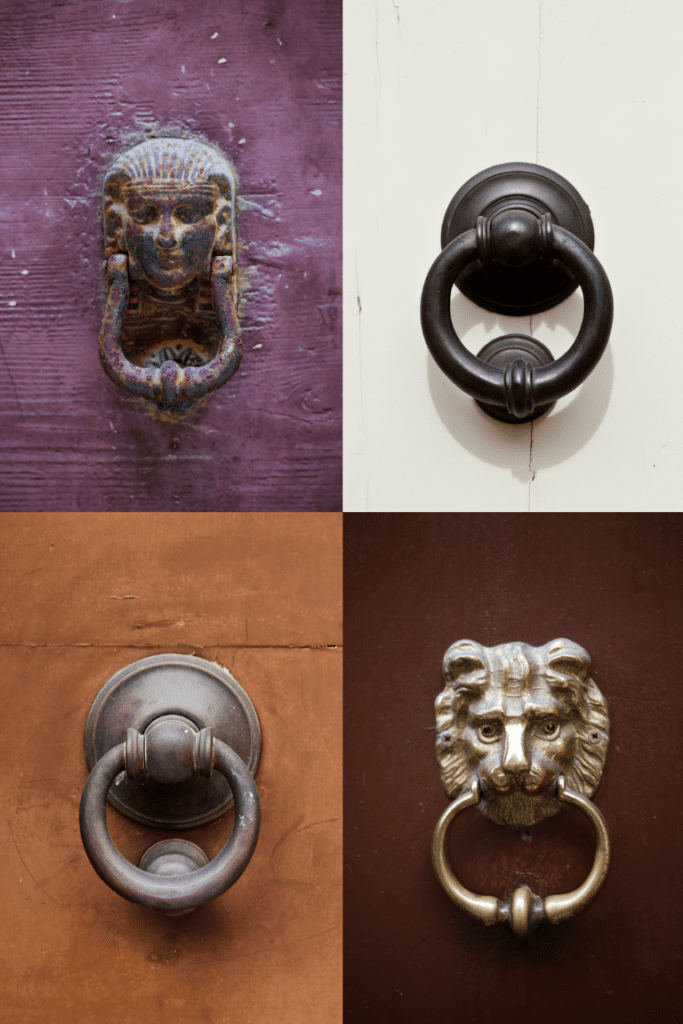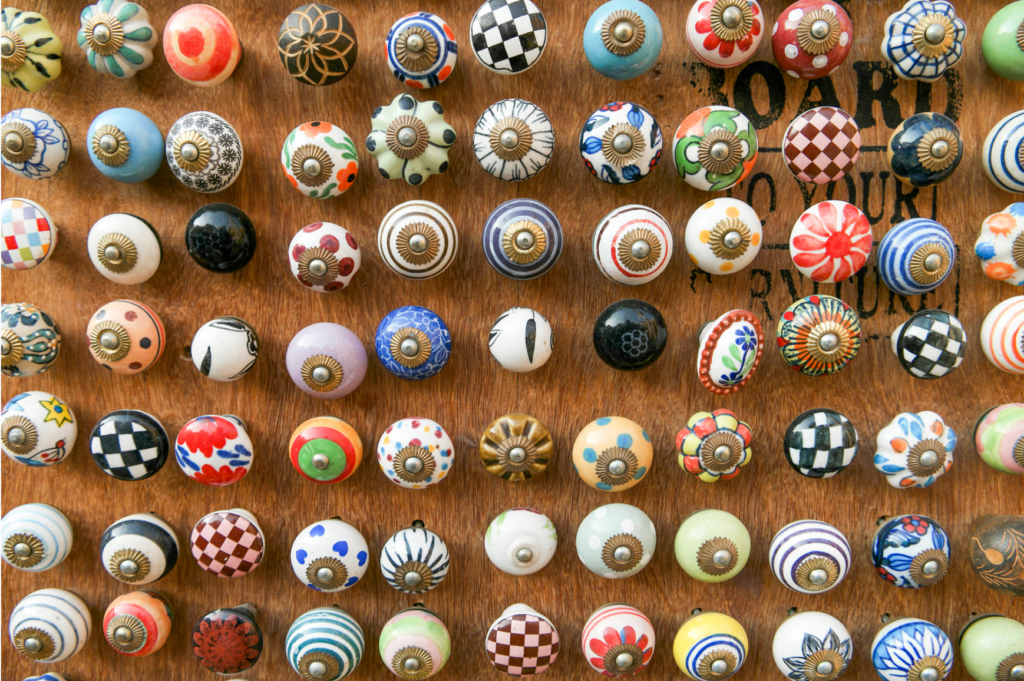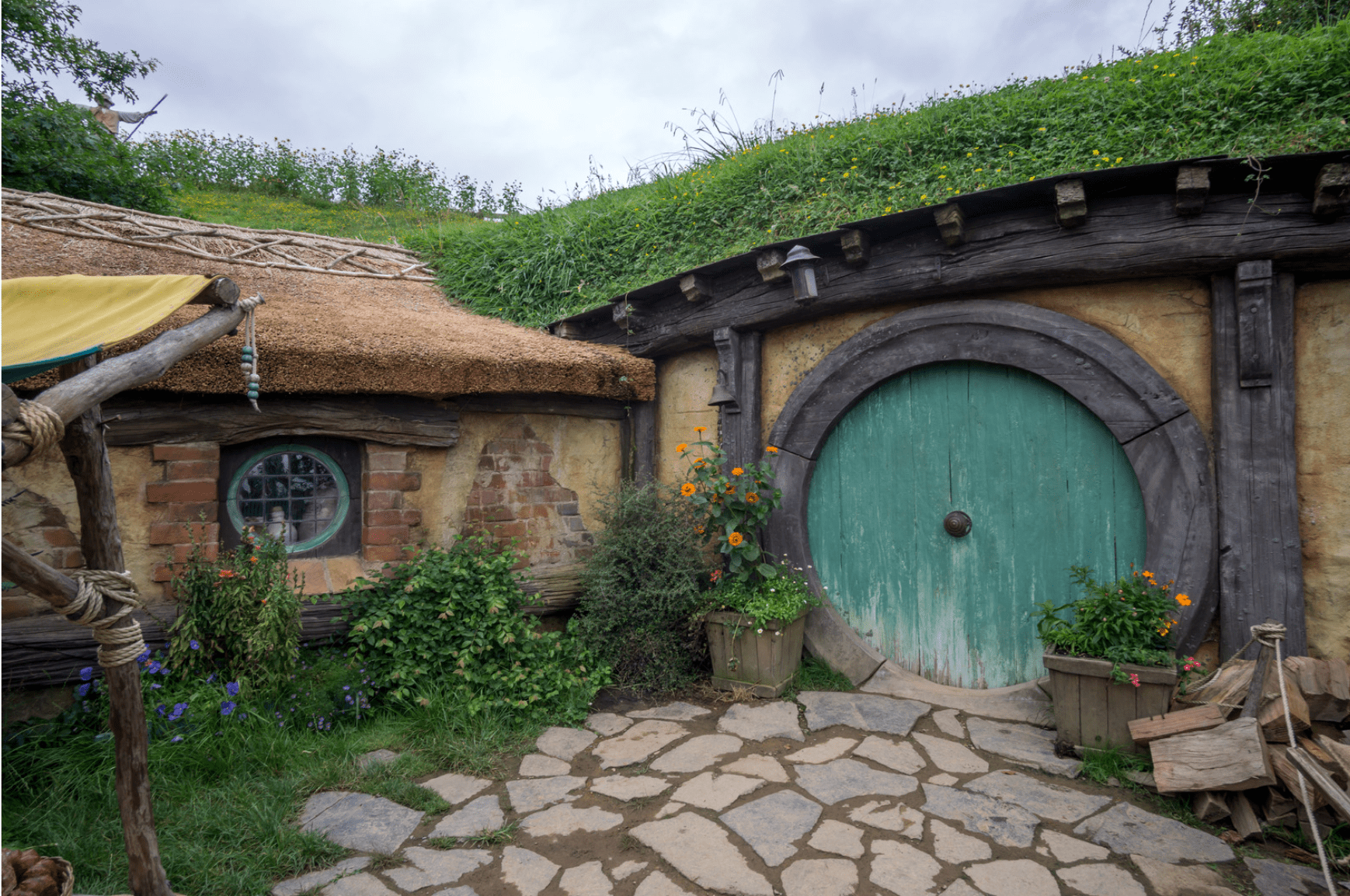Have you ever really thought about door knobs? I mean, seriously, who stops to think about them, right? They’re just…there. We use them every day without a second thought.
But did you know there’s a whole world of history, art, and even a bit of fun behind that small piece of metal?
You see, where a door knob sits isn’t just a random choice. It plays a big role in how easy the door is to use.
Most of the time, you’ll find the knob on the side of the door farthest from the hinges. It’s set up this way to make the door swing open smoothly.
But, hold up, you might have seen doors with knobs smack-dab in the middle. What’s that about, you ask?
Well, the reasons are many. It could be a nod to historical designs, a unique architectural touch, or maybe the door just called for something a bit different.
The position of the knob, believe it or not, tells a story. A story that’s woven with threads of design, physics, history, and culture.
So, come along as we dive into this fascinating world. Let’s explore door design, and give a shout-out to the unsung hero in our homes – the door knob.
Ready? Let’s turn that knob and dive right in!
History of Door Knob Placement
How Door Design Has Evolved

Ever thought about how doors came to be? Way back when, our ancestors just used a big slab of wood or stone. It wasn’t fancy but hey, it worked as a barrier!
But then, as we got better at building stuff, doors got a major upgrade. By the time of the Greeks and Romans, doors had fancy things like hinges and locks.
But door knobs? Those didn’t become a thing until the 18th century, when we got good at working with metal.
Why Door Knobs are Usually on the Edge
Ever wondered why door knobs are usually on the edge of the door? Well, it’s all about physics.
Having the knob at the edge lets you open the door easily. The further the knob is from the hinge, the less effort you need to open the door. Thanks, rotational force!
Also, having the knob at the edge makes the door swing smoothly. Plus, it’s where we usually put the latch or lock, so it’s handy for privacy and security too.
The Fascinating Story of Middle Door Knobs
Now, despite all the practical reasons for putting the knob on the edge, there have been times when we’ve put them in the middle.
Yep, right in the middle! And it’s not as crazy as it sounds.
Take the Victorians, for instance. They loved to make a statement. So, on big, grand doors, they’d sometimes put a fancy, ornate knob right in the center.
It was all about making the door look good.
In some places, like the Middle East and parts of Europe, you’ll find old buildings with doors that have knobs in the middle.
It’s often tied to local architectural styles and, sometimes, how the door was used.
So, you see, whether it’s on the edge or in the middle, the humble door knob has had quite a journey. Who knew, right?
The Aesthetics of Door Design

Why Looks Matter in Door Design
You know what they say about first impressions, right? Well, doors are no different! They’re often the first thing people see when they come to your place.
Everything about a door — its color, shape, material, and detailing — tells a story. But let’s not forget the door knob!
The Beauty of Middle Door Knobs
A door knob smack in the middle of the door? Now that’s a look! It adds balance and a touch of distinctiveness to the door design.
Especially on big doors, a middle knob can really catch the eye.
Middle door knobs also give you a chance to play with symmetry. You can pair them with panels, carvings, or glass inserts, all arranged around the knob.
The result? A door that’s a feast for the eyes.
And let’s not forget the surprise factor. Middle door knobs aren’t that common, so they add a dash of uniqueness to your door.
Middle-Knobbed Doors that Steal the Show
Want to see how middle knobs can transform a door? Let’s take a trip through time and around the world.
Back in the Victorian era in the UK, grand doors often boasted large, shiny, brass knobs in the middle. Paired with detailed woodwork or stained glass, they were a sight to behold!
Over in the Middle East, traditional doors often feature a large, round metal knocker smack in the center. Some even double as knobs! Adorned with intricate designs, they give doors a majestic touch.
Fast-forward to today, and you’ll find designers using middle knobs in all kinds of creative ways.
Take large pivoting doors, for example. Their centrally placed handle is not just useful, but a knockout design element too!
All these examples prove one thing: a middle door knob is more than just practical. It’s a style statement that can make any door stand out.
Middle Knobs: From Home Doors to Historical Landmarks
Middle Knobs at Home: Quirky or Classic?
You might spot a middle knob in a residential setting, but they’re not the norm. They’re perfect for homes aiming for a historic or unique look.
Think Victorian-style houses with a nod to the past. But, hey, anyone wanting to make a design statement might go for it.
Just remember, practicality often wins at home because we use these doors so much.
Middle Knobs on the Job: First Impressions Count
In commercial or public buildings, a middle knob on a big, impressive front door can be quite the eye-catcher. You’re likely to see them in places like libraries, museums, or historic buildings.
However, don’t forget that these doors have to be user-friendly too, especially in public spaces.
Middle Knobs on Specialty Doors: Time to Shine!
Special doors – like pivot doors, doors in historical buildings, or custom-designed ones – often sport middle knobs.
They’re not your average doors, which means they have more leeway for unique knob placement.
Ever seen a large pivot door? These swing open from a pivot point, not side hinges, and often feature a central handle or knob.
Not only does it look cool, but it’s also practical for these types of doors.
And in historical buildings, grand entry doors often come with middle knobs. They’re usually pretty fancy and add to the grandeur of the building.
So, whether it’s a pivot door or the entrance to a palace, a middle knob can be more than just a way to open the door.
It can be a key part of the design, adding a touch of style and intrigue!
Middle-Knobbed Doors: From History Books to Hollywood

Historical Spotlights: Middle Knobs around the World
You can spot middle-knobbed doors in historical buildings across the globe. Ever heard of the ‘Hobbit Door’ at St Edward’s Church in Stow-on-the-Wold, England?
It’s got this unique central iron ring that you pull to open.
Then there’s the Rotes Rathaus (Red City Hall) in Berlin, Germany. Its grand double doors sport centrally placed knobs, boosting the building’s already impressive look.
And don’t forget the Middle East. Many traditional homes and historic sites, like the Barjeel, a wind tower house in the UAE, also rock central knobs or handles.
Middle Knobs in Pop Culture: Hobbits and More
Middle-knobbed doors aren’t just for real-life buildings, they’re in movies and books too! They add a splash of magic and mystery.
Remember the round green door from “The Hobbit” and “The Lord of the Rings”? The one with the brass knob smack dab in the middle?
Bilbo and Frodo Baggins sure made that door famous!
Outside-the-Box: Creative Middle Knob Designs
A middle-knobbed door might sound a bit odd, but hey, it opens up some pretty creative design opportunities.
Modern architecture sometimes uses pivot doors with central handles. They’re not just good-looking but also make a bold statement.
And guess what? Some clever designers have even used middle knobs as a sneaky spot for tech. Think wireless electronic locks or smart doorbell cameras hidden right inside the knob!
That’s what I call a door that’s pretty, smart, and functional.
So, whether they’re historic, famous in pop culture, or just plain unique, middle-knobbed doors sure know how to make an impression!
Finding the Sweet Spot: How to Choose Your Door Knob Position
Picking the Right Spot: What to Think About
When it comes to deciding where to put your door knob, it’s all about striking the right balance. Here are a few things to mull over:
How often will you use the door? If it’s going to see a lot of action, a traditional knob placement could be your best bet.
Who’s going to be opening the door? Make sure everyone can comfortably use it, from kiddos to seniors, and folks with disabilities.
What does your door look like? Big doors might look better with a middle knob, while standard doors usually stick to the traditional spot.
How important is the look? If your door is more for show than for everyday use, a middle knob could add that special touch.
What’s the norm in your area? Some places have traditional practices when it comes to knob placement.
Battle of the Knobs: Traditional vs. Middle Placement
Traditional Door Knob Placement
Pros: It’s easy to use thanks to the extra leverage from the hinge distance. It gives the door a smooth swing and everyone knows how to use it.
Cons: You won’t win any design awards. It might not turn heads like a middle knob would.
Middle Door Knob Placement
Pros: It stands out and can be the star of the show on big doors. It lets you play around with unique designs.
Cons: It takes more muscle to open and might not be as easy for everyone to use.
Top Tips for Picking Your Door Design
Choosing the right door design is key for any building or renovation project. Here are some pointers:
Match Your Theme: Your door should fit with the rest of your building. Going for a sleek, modern look?
Pick a door with a simple knob. More into Victorian or historical styles? Try an ornate door with a middle knob.
Usage First: If the door will be used a lot, make sure it’s easy to open. If it’s more for show, you can focus more on how it looks.
Ask the Pros: Architects, designers, and door experts can give you great advice based on your needs and tastes.
Accessibility is Key: Make sure everyone can use your door. This might affect not just where the knob goes, but also how it looks and works.
Keep these pointers in mind, and you’ll find the perfect door knob position. One that’s a mix of style and function, and enhances your door’s look and usability.
Conclusion
It might seem like a minor detail, but where you place your door knob matters. It can make opening a door a breeze or a hassle.
And it can turn a plain old door into a statement piece. So, yes, it’s worth giving some thought.
Who knew there was so much to say about door knobs? We’ve delved into history, design, practical stuff, cultural quirks, and even popped into pop culture.
It’s been a ride, and it just goes to show how much thought goes into things we don’t even think about.
Next time you grab a door knob, stop and think about it. There’s a lot of design and planning behind its position.

